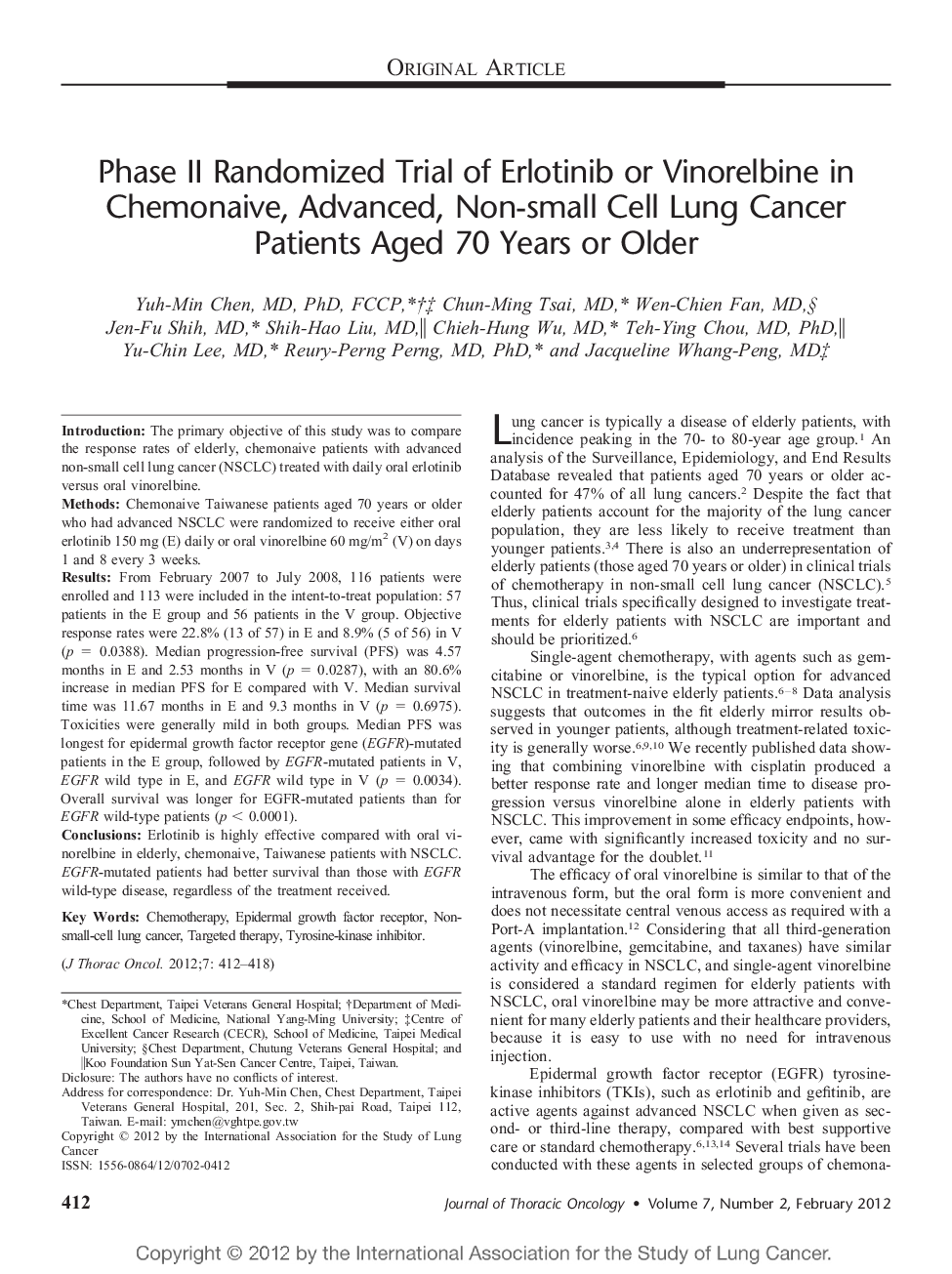| Article ID | Journal | Published Year | Pages | File Type |
|---|---|---|---|---|
| 3989907 | Journal of Thoracic Oncology | 2012 | 7 Pages |
Introduction:The primary objective of this study was to compare the response rates of elderly, chemonaive patients with advanced non-small cell lung cancer (NSCLC) treated with daily oral erlotinib versus oral vinorelbine.Methods:Chemonaive Taiwanese patients aged 70 years or older who had advanced NSCLC were randomized to receive either oral erlotinib 150 mg (E) daily or oral vinorelbine 60 mg/m2 (V) on days 1 and 8 every 3 weeks.Results:From February 2007 to July 2008, 116 patients were enrolled and 113 were included in the intent-to-treat population: 57 patients in the E group and 56 patients in the V group. Objective response rates were 22.8% (13 of 57) in E and 8.9% (5 of 56) in V (p = 0.0388). Median progression-free survival (PFS) was 4.57 months in E and 2.53 months in V (p = 0.0287), with an 80.6% increase in median PFS for E compared with V. Median survival time was 11.67 months in E and 9.3 months in V (p = 0.6975). Toxicities were generally mild in both groups. Median PFS was longest for epidermal growth factor receptor gene (EGFR)-mutated patients in the E group, followed by EGFR-mutated patients in V, EGFR wild type in E, and EGFR wild type in V (p = 0.0034). Overall survival was longer for EGFR-mutated patients than for EGFR wild-type patients (p < 0.0001).Conclusions:Erlotinib is highly effective compared with oral vinorelbine in elderly, chemonaive, Taiwanese patients with NSCLC. EGFR-mutated patients had better survival than those with EGFR wild-type disease, regardless of the treatment received.
